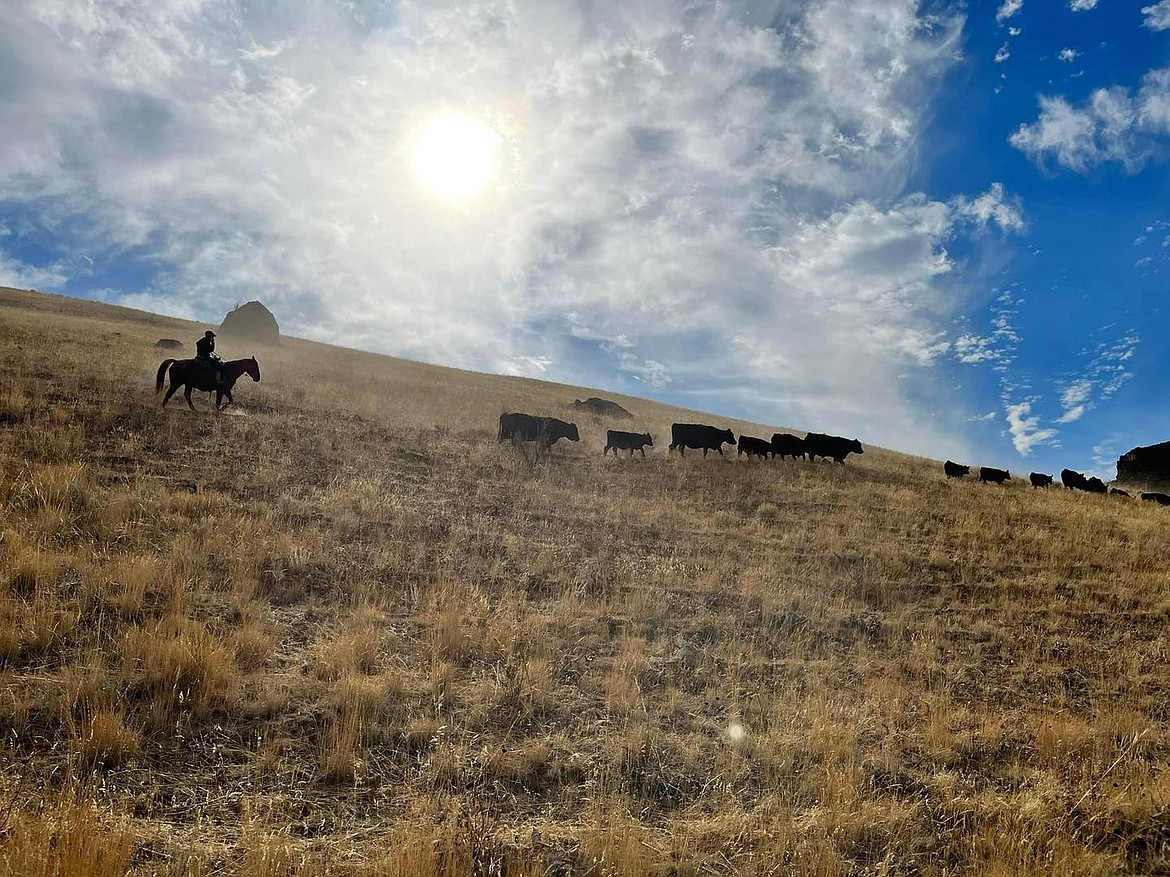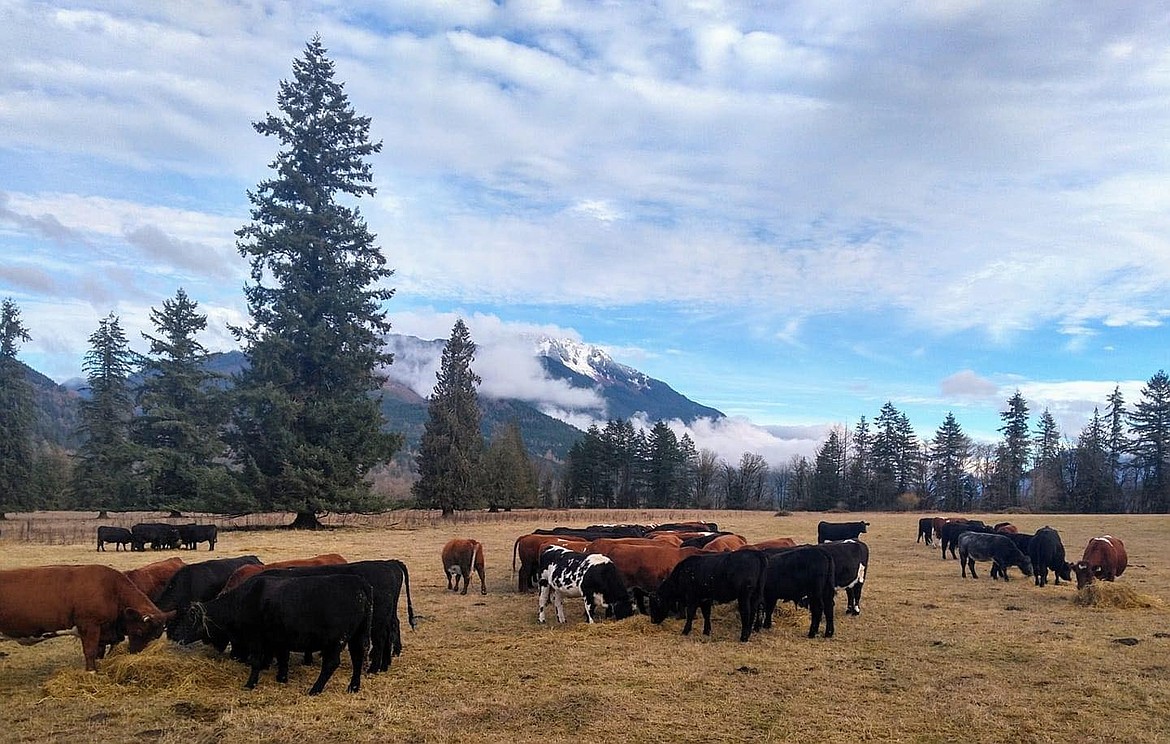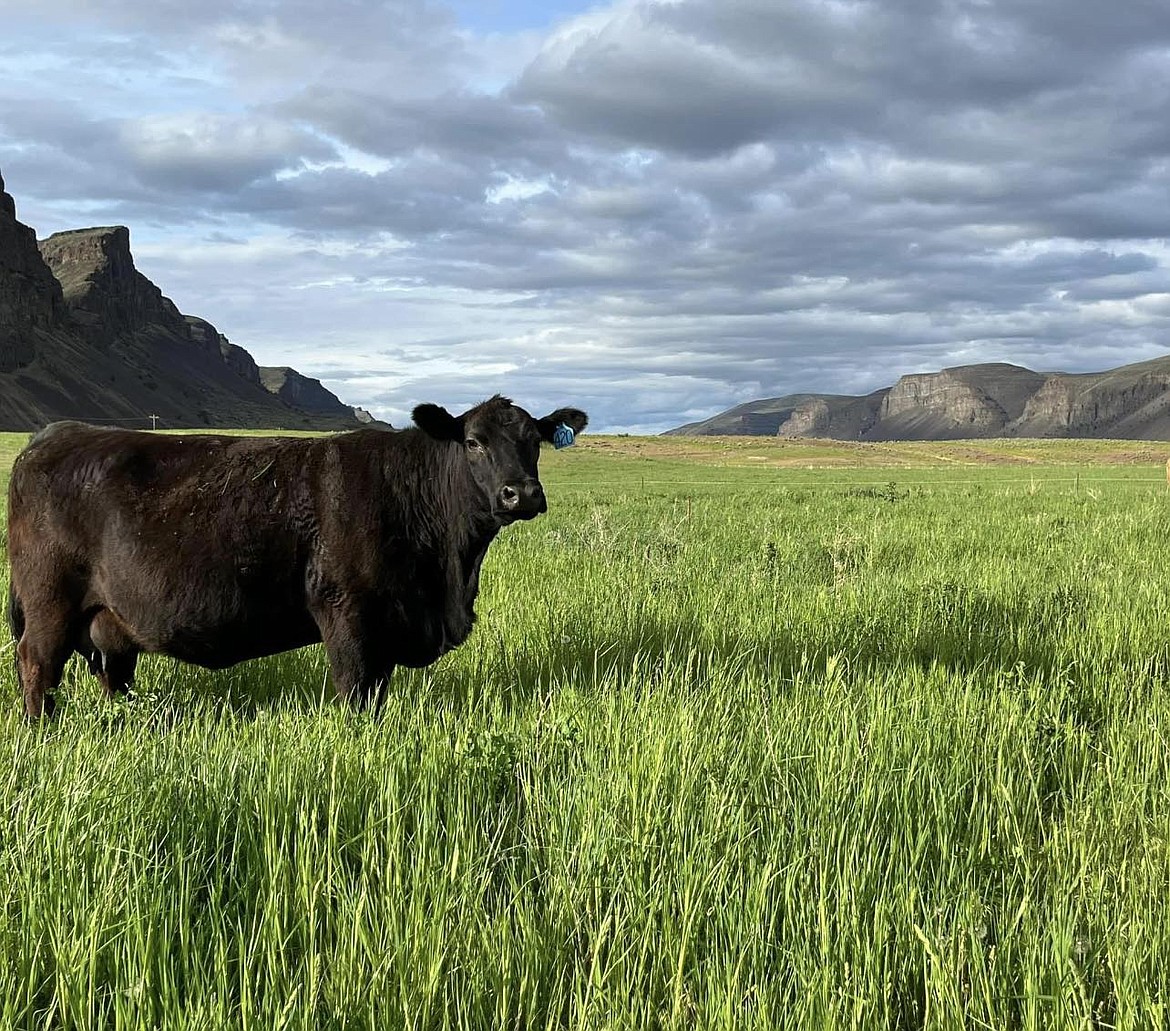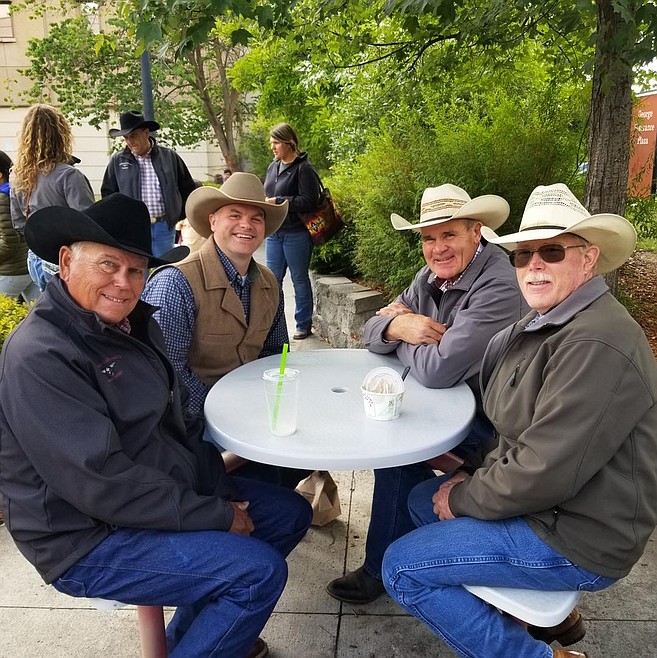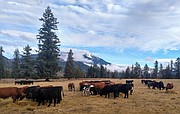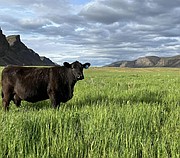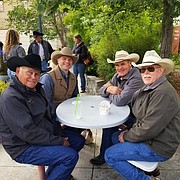Bovine market: Cattle industry sees high market prices, low herd average
GABRIEL DAVIS | Hagadone News Network | UPDATED 1 year, 3 months AGO
Gabriel Davis is a resident of Othello who enjoys the connections with his sources. Davis is a graduate of Northwest Nazarene University where he studied English and creative writing. During his free time, he enjoys reading, TV, movies and games – anything with a good story, though he has a preference for science fiction and crime. He covers the communities on the south end of Grant County and in Adams County. | September 27, 2023 1:00 AM
ELLENSBURG — It’s a great time to be in the cattle industry, said Washington Cattlemen’s Association Executive Vice President and cattle rancher Chelsea Hajny.
“It’s the thing that agriculture in general, whether in production agriculture, whether you’re in crops and farming, or raising cattle is very cyclical,” said Hajny. “It’s an exciting time to be in cattle right now because beef prices are high and it’s always a struggle to be profitable with inputs, and when I say inputs, I mean feed, the cost of fuel, et cetera.”
Hajny said before last year the market was very different.
“Prices in the last several years of commodities have been sky-high, so it has been really hard to break even in cattle,” she said. “So now it’s exciting to see cattle prices trend upwards.”
According to the USDA National Weekly Fed Cattle Comprehensive report for the week of Sept. 4 to 11, the average price per hundredweight of dressed cattle for that week was $290.76 for all grades, and the average price for live cattle was $183.79. The report said that the dressed cattle price is up $59.78 from that time the previous year, and the live cattle price is up $39.64.
Hajny said this trend has been happening for the last year or so.
“The demand for beef is what really ultimately has driven that, and that’s exciting because there’s a lot of protein options available at meals, and for beef to be up there with one of the number one desired protein sources, that’s a testament to what we do every day.”
Hajny then added a disclaimer about the nature of the market.
“It will cycle, but ultimately industry experts and analysts expect this to hang on for the next couple of years,” she said.
WCA’s President Jeff Keane echoed Hajny’s statements.
“Right now everything I’ve heard and what’s been happening through the summer, the market should really be good for us this year, and we need that because we’ve had some years that have been, you know, Just like anything in farming or ranching, you have up and down years so you hang on for the good ones,” said Keane.
Keane works on the Keane Ranch in Rock Island with other members of his family.
“Our ranch is just getting ready to be marketing,” said Keane. “We just separated the calves from the cows so, they’re going to be going here at the end of the month, they’re going to be going to a local auction.”
Keane explained some of the factors that might have played a part in the ups and downs of the industry over the last year and before.
“Part of it has been that our total inventory, cow inventory, in the United States is down and so we don’t have quite the numbers…that have been coming in, and then part of that reason has been the drought. There’s been drought areas, especially back in the southwest and they’ve liquidated quite a few cattle in those areas.”
Hajny said that within the last year, the low inventory is a positive sign despite the issues with drought.
“And the reason for that is that the national herd average is at an all-time low, actually in about six decades, and that’s just because the demand for beef has grown and then the prices have gone up. So ranchers are not retaining as many females as they used to because they can sell them and they’re worth something,” said Hajny.
Keane also said the demand for beef is high and contributing to the low inventory.
“Right now, we’ve got good consumer demand for beef. It’s a good protein, it’s a complete protein and people are wanting beef and so we’re supplying it.”
Keane said in light of the market factors and recent trends his ranch is optimistic of a good price at auction.
“We’ve seen some really good prices so far, and some people have probably already contracted their calves and had the price locked in,” he said.
However, the market is impacted by multiple factors in the system, said Keane.
“We just hope that everyone all through the whole production system, you know, in the whole production chain can make money at each place. That’s when it works out really well.”
Gabriel Davis may be reached at gdavis@columbiabasinherald.com. For information on the upcoming Cattlemen’s and Cattlewomen’s Associations conference, see page 35.
ARTICLES BY GABRIEL DAVIS

Work-based learning lets students build their own futures
MOSES LAKE — Work-based learning provides education opportunities for the workforce to receive hands-on training and technical education and prepare themselves to enter various industries. Educators and workforce development professionals from Eastern Washington discussed some the training they offer and the benefits of their programs. Next Generation Zone, an affiliate of WorkSource based in Spokane, provides job training opportunities for youth and young adults ages 16 to 24. Program Coordinator Kate Martin said there are multiple benefits to the program. “One of them is a paid work experience, and that’s where we reach out to area employers who are willing to take a young person and train them,” she said. “This is a short-term learning experience, so it’s typically about 240 hours; sometimes it could be longer or shorter. We’re the actual employer; we cover all of their wages, taxes, the L&I, and the employer just agrees to give them the experience and train them in whatever field it is that they’re wanting to go into.”

Serving schools: ESD superintendents reflect on operations, priorities
MOSES LAKE — Educational service districts are government-mandated agencies put in place to provide services to school districts across the state. ESD Superintendents discussed what they do and their priorities in operating their districts. ESD 105, led by Superintendent Kevin Chase, serves four counties, including Kittitas, Yakima and portions of Klickitat and Grant counties and provides support for 25 school districts – including Royal School District and Wahluke School District – and more than 66,000 students. “We help them collaborate with each other as well or collaborate with other partners,” Chase said. “(It’s) a lot of advocacy work, either regionally or across the state, or even federally, working on different issues that impact our education. And we provide very specialized services in certain situations in order to meet the needs of our students in our region and of our school districts.”

Columbia Basin Project making headway through Odessa Groundwater program
CASHMERE — The Columbia Basin Project is making gradual progress toward completion with particularly significant accomplishments for the Odessa Groundwater Replacement Program in the last six months or so, according to Columbia Basin Development League Executive Director Sara Higgins. “When we’re dealing with a project of this size, advancement is kind of like watching paint dry, but yes, there have been (developments),” she said. “There are a lot of exciting things happening right now.” There are more than 300 miles of main canals, about 2,000 miles of lateral canals and 3,500 miles of drains and wasteways in the irrigation project, according to the U.S. Bureau of Reclamation website. The CBDL advocates for the operation of those waterways and for the project to continue “build-out.”

